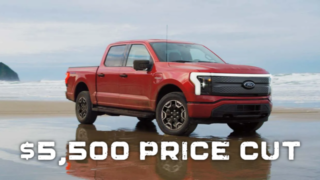SOUND EFFECTS: FORD USING VIRTUAL REALITY TO FINE-TUNE SOUND QUALITY INSIDE FUTURE VEHICLES
VIDEO: Ford Virtual Vehicle Sound Simulator
SOUNDBITES: Virtual Vehicle Sound Simulator
DEARBORN, Mich., Dec. 17, 2009 – It looks a bit like a racing game in a video arcade, but the driver wears headphones. The object of this high-tech drive down the digital highway? Perfect the sound quality inside a future Ford vehicle long before the first prototype is ever built.
Ford Motor Company is the first North American automaker to utilize the Virtual Vehicle Sound Simulator to fine-tune sound inside a vehicle’s cabin, part of a continuing effort by Ford to deliver industry-leading quietness and refinement with minimal noise, vibration and harshness.
The Virtual Vehicle Sound Simulator can shave valuable time and cost out of the vehicle development process. Calibrating cabin sound in the virtual world reduces the amount of real-world testing needed in the wind tunnels and on the test track once vehicles reach the prototype stage.
“We know sound inside a vehicle is a major factor in customer satisfaction,” said Mark Clapper, technical leader for noise, vibration and harshness at Ford. “This is a major leap in technology that will provide Ford with a significant competitive advantage.”
Listening virtually
The new Virtual Vehicle Sound Simulator technology gives Ford sound engineers capabilities similar to their visual counterparts, who are doing groundbreaking work with virtual reality and animation software – creating immersive experiences that allow designers to virtually sit in vehicles during the computer design process.
With the audio technology, engineers also predict sounds based on digital drawings of the vehicle and then combine those sounds into a realistic simulation. For the first time, engineers can hear what a vehicle would sound like under different road conditions, at various speeds and in a range of gear and throttle conditions as the simulated vehicle shifts, accelerates and decelerates.
Previously, Ford engineers would test the sound quality of specific components one at a time, playing back and measuring the sound of each component under a single drive condition. Now engineers can hear the way a vehicle’s interior sounds in real-time under dozens of drive conditions simply by clicking through them. This ensures that the sound quality of the individual parts work in harmony with each other for a holistic analysis of the sound data.
For example, engineers can test the sound output from multiple exhaust system designs for a future model pickup truck while also switching between a variety of drive events that are likely to change in the real world, such as road surfaces, vehicle load conditions, shift points, vehicle and wind speeds, and throttle output.
“We create an array of 76 different simulated sounds from data gathered about the proposed vehicle,” said Clapper. “We consider body shape and powertrain design under various road conditions and speeds. When we drive the simulator, it’s amazing how we’re able to recognize sounds with our ears that we would have never picked up otherwise from that mountain of data.”
Ford engineers also can make comparisons against competitive vehicles with a simple click of the mouse. It allows them to perfect and enhance interior sounds from the earliest stages, which will help Ford to improve vehicle sound year after year.
Based on software from the aerospace and video gaming industries, the sound simulator also is proving to be the ideal tool to gather consumer research. Ford asks consumer test groups to don the headphones and provide feedback on the sound of vehicles. In past testing, vehicles stripped of their branding would be put to the consumer test, but consumers often still recognized the make of the vehicle they were driving. Now, consumers can rate Ford vehicles they can’t even drive yet in the real world.
“Sometimes what looks acceptable on a spreadsheet sounds bad once you actually hear it in real life, which is why simulating sound real-time and under real-world conditions helps us to weed out unpleasant sounds before our designs even make it to the drawing board,” Clapper said.
Clapper says his team is now able to eliminate mistakes up front, reduce the need for prototyping, shorten the time to market, and produce a product that not only delivers high-end interior quietness, but also provides vehicle sounds that are more engaging for the customer.
Industry-leading interior quietness
The Virtual Vehicle Sound Simulator will help Ford build upon significant strides it has made in quietness and overall sound quality in recent years. Ford design and engineering teams have begun delivering interior quietness that rivals many luxury brands, according to third-party consumer research.
Ford has the fewest wind noise, squeaks and rattle issues of any full-line vehicle manufacturer, according to J.D. Power and Associates’ Initial Quality Study. Ford brands also achieve higher interior quietness customer satisfaction scores than their Asian counterparts, according to RDA Group’s Global Quality Research Study.
A number of improvements in sound-deadening technologies and materials on Ford vehicles help block the noise outside so that the inside is a quiet, tranquil environment for driver and passengers.
Advancements in materials, such as expandable foam pellets strategically placed in the doors, headliner and pillars, can improve sound-deadening efficiency by up to 20 percent. Interiors are quieted further with hood insulators, inner and outer dash absorbers, sound-absorbing carpet, improved ceiling baffles, additional sound absorption in the trunk, and new interior and headliner materials.
Engineers stiffen certain parts of the vehicle, strategically mount engines and retune the rear suspension to reduce vibration, all to deliver a ride that fits the vehicle – quieter and more refined for a sedan like Fusion or Taurus, while sportier and more powerful for a Mustang or F-150.
Other ways Ford engineers build interior quietness into the 2010 lineup include:
- Acoustic laminated windshields that feature a layer of sound-absorbent vinyl sandwiched between two sheets of glass
- Improved body/door sealing to reduce wind noise
- Expandable stuffers in the fenders and pillars
- Constrained layer damping material on the entire floor to reduce road noise, especially generated by the tires
- A retuned air induction system for a more refined powertrain and sound
- All-new acoustic headliners to further deaden interior noise
An example of Ford’s improvements can be heard in the all-new 2010 Ford Taurus, which achieved the quietest levels ever recorded in Ford labs following wind tunnel tests. Improvements are also found in the 2010 Ford Fusion, which features side mirrors designed to deflect air without creating wind noise. Engineers and designers produced a mirror that actually generates less wind noise than a vehicle without side-view mirrors.
Ford also raised the bar on road noise against competing models. The Lincoln MKZ, for example, holds the lowest recorded sound level measurement in internal 30-mph tests, coming in 3.5 dBA quieter than the Acura TL and 1.7 dBA quieter than the Lexus ES350.
“A 3 or 4 dBA variance in the 30-mph test results is definitely a noticeable difference to drivers or passengers. These are meaningful improvements that significantly enhance the driving environment,” according to Mark McCarthy, manager, Vehicle Program NVH. “We made a concerted effort to fine-tune every component that could contribute to noise so that we can deliver a driving experience that rivals some of the high-end luxury brands, but at an affordable price.”
###
About Ford Motor Company
Ford Motor Company, a global automotive industry leader based in Dearborn, Mich., manufactures or distributes automobiles across six continents. With about 200,000 employees and about 90 plants worldwide, the company’s automotive brands include Ford, Lincoln, Mercury and Volvo. The company provides financial services through Ford Motor Credit Company. For more information regarding Ford’s products, please visit www.ford.com.





